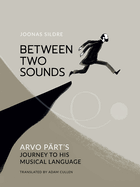
Arvo Pärt is arguably the most performed living composer in the world. Estonian cartoonist Joonas Sildre worked closely with his renowned compatriot to create Between Two Sounds, a gorgeous graphic title depicting Pärt's life, from his 1935 birth to his musical transformations. Sildre's meticulous, borderless panels--in black, white, and shades of greenish-grey--are accompanied by Adam Cullen's succinct, lucid translation from the Estonian.
Pärt's mother places him in a children's music school in 1945. By 1949, he announces his intention to become a composer, but "a different kind!" He consistently strains against institutional expectations and restrictions, exacerbated by the Soviet occupation of Estonia. His compositions are considered so modern and avant-garde as to place himself in danger. Cleverly manipulating the system of political gatekeeping becomes a necessity. Sildre skillfully captures the seemingly ridiculous back-and-forth of incomprehensible judgment.
Pärt's 1968 composition "Credo" engenders a "Silentium" during which Pärt turns inward, finds new love, recommits to Orthodox Christianity, and immerses himself in medieval texts, teachings, and chant. When he resumes composing in 1975, his goal is to "reach religion's core through my own essence," inspiring the invention of his distinct form, tintinnabuli. As Pärt's reputation--and audience--grows globally, he's deemed more threat than comrade, resulting in surveillance, violent intrusion, and the family's expulsion in January 1980 from Estonia.
Sildre brilliantly uses simple lines--presented in swirls, circles, empty musical staffs--to explicate, connect, and enhance Pärt's creative and emotional musical journeys, moving up, down, straight, corkscrew, around and around, and continuing off the pages. Sildre's art radiantly confirms Pärt will not be contained, spreading his music throughout the world. --Terry Hong

